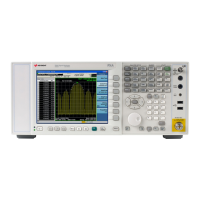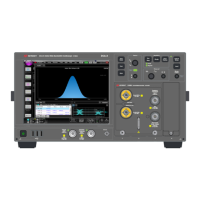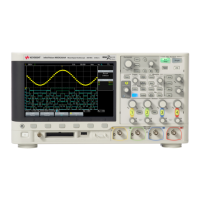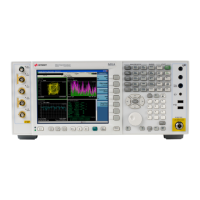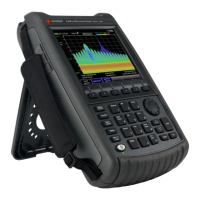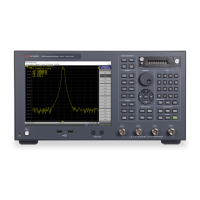3 VMA Mode
3.3 Monitor Spectrum Measurement
Example
:CORR:NOIS:FLO ON
Dependencies This control only appears in instruments with the NFE or NF2 license installed. In all others, the
control does not appear, however the SCPI command will be accepted without error (but will have no
effect)
Couplings When NFE is enabled in any mode manually, a prompt will be displayed reminding you to perform the
Characterize Noise Floor operation if it is needed. If NFE is enabled through SCPI and a Characterize
Noise Floor operation is needed, an error will be entered in the system error queue
Preset Unaffected by Mode Preset. Turned off by Restore Mode Defaults
State Saved No
More Information
The instrument is characterized in the factory (or during a field calibration) with a
model of the noise, referred to the input mixer, versus frequency in each band and
path combination. Bands are 0 (low band) and 1 through 4 (high band) in a 26.5 GHz
instrument, for example. Paths include normal paths, preamp paths, the electronic
attenuator, etc.
In most band/path combinations, the noise can be well characterized based on just
two parameters and the instrument frequency response before compensation for
frequency-dependent losses.
After the noise density at the input mixer is estimated, the effects of the input
attenuator, RBW, detector, etc. are computed to get the estimated input-port-
referred noise level.
In the simplest case, the measured power (signal plus analyzer noise) in each
display point (bucket) is compensated by subtracting the estimated noise power,
leaving just the signal power. This is the operation when the detector is Average and
the Average Type is set to Power.
In other cases, operation is often not quite as good but still highly effective. With
peak detection, the noise floor is estimated based on the RBW and the duration of
the bucket using the same equations used in the noise marker function. The voltage
of the noise is subtracted from the voltage of the observed signal-plus-noise
measurement to compute the estimated signal voltage. The peak detector is one
example of processing that varies with detector to give good estimates of the signal
level without the analyzer noise.
For best operation, the average detector and the power scale are recommended, as
already stated. Peak detection for pulsed-RF can still give excellent effectiveness.
FFT analysis does not work well, and does not do NFE well, with pulsed-RF signals,
so this combination is not recommended. Negative peak detection is not very useful,
either. Sample detection works well, but is never better than the average detector
because it doesn’t smooth as well. The Normal detector is a combination of peak
and negative peak behaviors, and works about as well as these.
Vector Modulation Analyzer Mode User's &Programmer's Reference 644
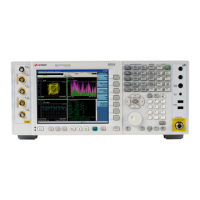
